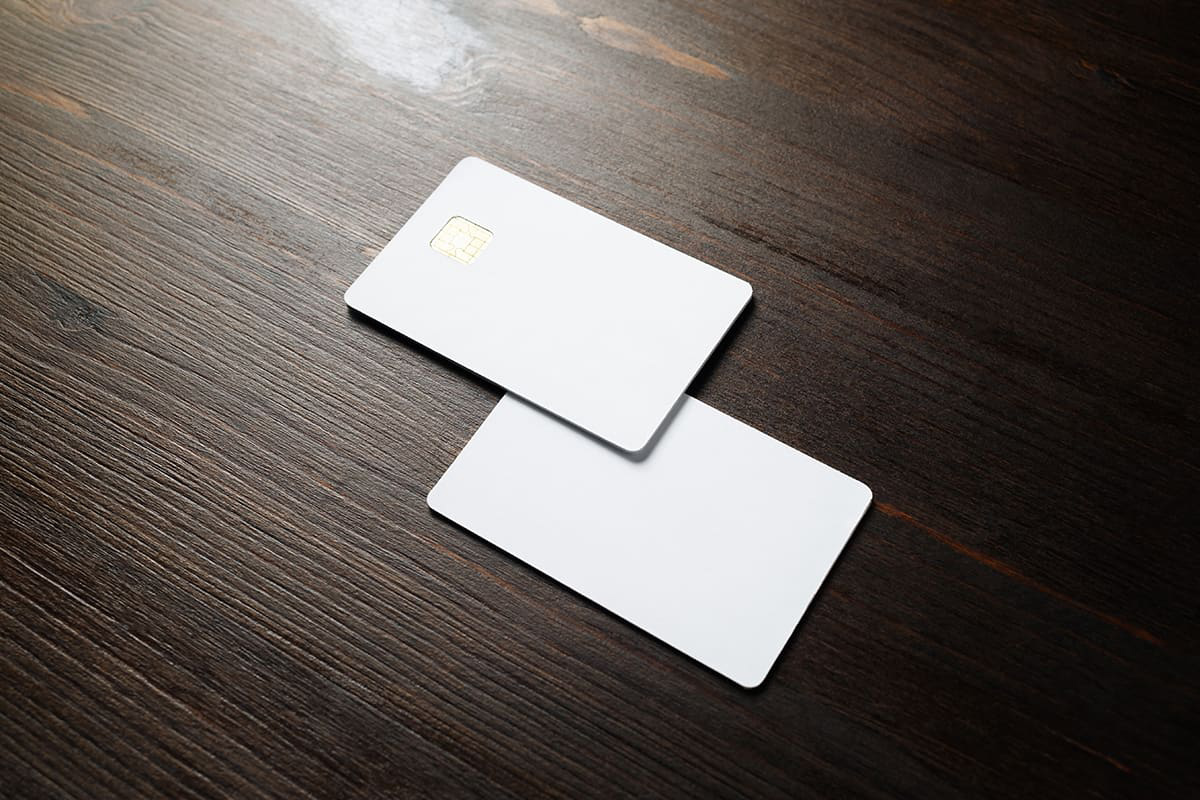Home>Finance>What Are The Dimensions Of A Credit Card In Inches


Finance
What Are The Dimensions Of A Credit Card In Inches
Modified: December 29, 2023
Learn about the dimensions of a credit card in inches and how it relates to finance. Discover the standard size and ensure accurate measurements.
(Many of the links in this article redirect to a specific reviewed product. Your purchase of these products through affiliate links helps to generate commission for LiveWell, at no extra cost. Learn more)
Table of Contents
Introduction
When it comes to everyday financial transactions, credit cards have become an indispensable tool for consumers. These small, plastic cards are widely accepted and allow individuals to make purchases without carrying cash. Whether you’re shopping at a local store or making an online purchase, credit cards offer convenience and security.
But have you ever wondered about the dimensions of a credit card? While they may seem like a trivial detail, the size and dimensions of a credit card actually serve a crucial purpose. Whether you’re designing a wallet or creating a cardholder, it’s important to have accurate measurements to ensure a proper fit.
Standard credit card dimensions in inches are essential for manufacturers, businesses, and consumers alike. Understanding these dimensions not only helps in the design and production process but also plays a role in the compatibility of the card with card readers and ATMs.
In this article, we’ll explore the standard dimensions of credit cards and discuss why these measurements are significant in the financial world.
Standard Credit Card Dimensions in Inches
Credit cards are standardized in their size and shape to ensure consistency across various financial institutions and payment systems. The standard dimensions of a credit card in inches are:
- Length: 3.375 inches
- Width: 2.125 inches
These dimensions are widely accepted and used by most credit card issuers around the world. The length of a credit card remains constant at 3.375 inches, while the width stands at 2.125 inches.
This standard size is also commonly referred to as the “ISO/IEC 7810 ID-1” format, which is the international standard for identification cards, including credit cards. This standardized size allows credit cards to fit comfortably into wallets, cardholders, and card slots without any issues.
It’s important to note that credit cards may have slightly rounded corners to prevent them from getting damaged or catching on other objects. The corners are usually rounded with a radius of 0.125 inches.
The dimensions of a credit card may seem small, but they are carefully designed to optimize usability and convenience. Their compact size allows individuals to easily carry multiple cards and facilitates smooth insertion and removal from card readers.
Additionally, the dimensions of a credit card are directly linked to the specifications of card readers and automated teller machines (ATMs). By adhering to a standard size, credit cards can be read and processed efficiently by these machines, ensuring a seamless payment experience for consumers.
So, the next time you handle a credit card, take a moment to appreciate the thought and precision that went into its design and dimensions. These seemingly minor details play a significant role in the functionality and widespread acceptance of credit cards in our daily lives.
Thickness of a Credit Card
In addition to its dimensions in length and width, the thickness of a credit card is another important factor to consider. The standard thickness of a credit card is approximately 0.03 inches, or 0.76 millimeters.
This thickness ensures that the credit card is sturdy and durable enough to withstand regular use and handling. It strikes a balance between flexibility and rigidity, allowing the card to be easily inserted and swiped through card readers without bending or breaking.
The precise thickness of a credit card is crucial for several reasons. Firstly, it affects the card’s compatibility with cardholders, wallets, and other storage devices. If a credit card is too thick, it may not fit properly in these compartments, causing inconvenience for the cardholder. On the other hand, if a credit card is too thin, it may feel flimsy and more prone to damage.
Furthermore, the thickness of a credit card plays a role in the card’s ability to withstand wear and tear. A thicker card is less likely to bend or become warped over time, ensuring that the card remains functional and readable for an extended period. It also contributes to the overall perception of quality and reliability associated with the credit card.
It’s important to note that even though the standard thickness of a credit card is approximately 0.03 inches, there may be minor variations among different credit card issuers. Some cards may be slightly thinner or thicker, but these differences are usually marginal and fall within an acceptable range.
As with the other dimensions of a credit card, the thickness is a standardized and controlled measurement to ensure compatibility, usability, and reliability across the payment industry.
Next time you hold a credit card in your hand, take a moment to appreciate its optimal thickness, which strikes the perfect balance between flexibility and stability, making it a reliable tool for everyday transactions.
Other Dimensions of a Credit Card
While the length, width, and thickness are the primary dimensions of a credit card, there are a few other measurements worth mentioning that contribute to the overall design and functionality:
- Embossed Numbers: Many credit cards have embossed numbers on the front. These raised digits are typically 0.02 inches in height and serve as a security feature to deter counterfeiters.
- Magnetic Stripe: The magnetic stripe on the back of a credit card allows for data storage and transmission. The stripe is usually 0.75 inches wide and runs horizontally across the back of the card.
- Signature Panel: Credit cards often feature a signature panel on the back where cardholders can sign their name. The standard size of a signature panel is approximately 2.75 inches in length and 0.625 inches in height.
- Chip: With the transition to chip-enabled cards for enhanced security, the dimensions of the chip on a credit card are an important consideration. The chip itself is typically around 0.3 inches square and is embedded in the front of the card.
These additional dimensions, such as the embossed numbers, magnetic stripe, signature panel, and chip, are designed to provide essential features and functionality to credit cards. They contribute to the card’s security, usability, and compatibility with various payment systems and devices.
It’s worth noting that the placement and specifics of these features may vary slightly from one credit card issuer to another. However, the industry generally adheres to certain standards to ensure consistency and ease of use for consumers.
By understanding the various dimensions of a credit card, designers, manufacturers, and users can better appreciate the intricate details and functionalities that contribute to the card’s overall design and functionality.
Variations in Credit Card Dimensions
While the standard dimensions of a credit card are widely accepted and used by most financial institutions, it’s important to note that there can be slight variations in these measurements. These variations can be influenced by regional preferences, card issuer specifications, or specialized card types.
One common variation in credit card dimensions is seen with contactless or “tap-and-go” cards. These cards are equipped with near-field communication (NFC) technology, allowing users to make payments simply by tapping or waving their card near a contactless-enabled payment terminal. Due to the inclusion of the NFC chip, contactless credit cards may be slightly thicker than traditional cards, typically measuring around 0.04 inches.
Another instance where credit card dimensions may deviate from the standard is with specialty or premium cards. Premium cards, such as those offered by prestigious credit card companies or targeted at high-net-worth individuals, may opt for unique designs and dimensions to set them apart from standard cards. These variations can include non-standard lengths, widths, or even alternative shapes, showcasing the card’s exclusivity and luxury.
In some cases, credit card issuers may introduce co-branded or affinity cards that partner with specific organizations, such as sports teams or charities. These cards often incorporate customized designs or additional branding elements, which can result in variations in dimensions. However, these variations are typically minimal and still adhere to general industry standards.
It’s important for consumers to be aware of these variations, especially if they plan to use specialized cardholders or wallets. Ensuring a proper fit and functionality between the card and the storage device is crucial to maintaining ease of use and protecting the card from damage.
While variations in credit card dimensions do exist, they are relatively rare and typically limited to specific card types or branding considerations. The vast majority of credit cards adhere to the standard dimensions to maintain compatibility with card readers, ATMs, and other payment infrastructure.
Before designing or purchasing specialized accessories for credit cards, it’s always recommended to verify the dimensions and compatibility requirements specific to the cards in question.
Importance of Standard Credit Card Dimensions
The standard dimensions of a credit card play a crucial role in the financial world. Here are a few reasons why these standardized measurements are important:
- Compatibility: By adhering to a standard size, credit cards are compatible with various payment systems, card readers, and automated teller machines (ATMs) around the world. This ensures that cardholders can use their credit cards seamlessly, wherever they may be.
- Usability: The standard dimensions of a credit card are designed for optimal usability. They fit comfortably in wallets, cardholders, and other storage devices, making it convenient for individuals to carry and access their credit cards whenever needed.
- Efficient Processing: The standardized size of credit cards enables effortless processing through card readers and ATMs. It allows for quick and accurate reading of card data, ensuring smooth and efficient transactions.
- Interchangeability: The standardized dimensions of credit cards facilitate interchangeability among different card issuers. This means that cardholders can use their credit cards across different financial institutions, allowing for flexibility and convenience in their financial transactions.
- Global Acceptance: The consistent dimensions of credit cards contribute to their global acceptance. Regardless of the country or payment system, merchants are accustomed to accepting credit cards of standard size, making it easier for travelers and cross-border transactions.
- Design and Manufacturing: For designers and manufacturers of wallets, cardholders, and other accessories, having standardized credit card dimensions ensures that their products can accommodate the vast majority of credit cards in circulation. This creates a more efficient production process and reduces potential customer dissatisfaction due to ill-fitting accessories.
The standard dimensions of a credit card may seem insignificant, but they are integral to the functionality, compatibility, and acceptance of credit cards in our financial ecosystem. They provide a consistent and standardized framework that benefits both cardholders and the global financial industry as a whole.
So, the next time you use your credit card or browse through wallets and cardholders, remember that the adherence to standard dimensions is an essential factor in ensuring smooth financial transactions and a seamless user experience.
Conclusion
The dimensions of a credit card may seem like a trivial detail, but they play a significant role in the financial world. Standardized credit card dimensions ensure compatibility, convenience, and efficient processing across various payment systems and card readers worldwide.
With a length of 3.375 inches and a width of 2.125 inches, credit cards are designed to fit comfortably in wallets, cardholders, and other storage devices. The thickness of approximately 0.03 inches strikes the perfect balance between flexibility and durability.
While there may be minor variations in dimensions for specialty cards and contactless cards, the majority of credit cards adhere to the standard measurements. This consistency allows for global acceptance, seamless interchangeability, and efficient processing of transactions.
Additionally, the inclusion of features such as embossed numbers, magnetic stripes, signature panels, and chips further enhances the functionality and security of credit cards.
Designers and manufacturers benefit from standardized dimensions, as they can create accessories that accommodate the majority of credit cards in circulation, providing customers with practical and well-fitting products.
Overall, understanding the dimensions of a credit card is essential for anyone involved in the financial industry or those seeking to create compatible accessories. These seemingly small details contribute to the smooth functioning of everyday transactions and the widespread acceptance of credit cards globally.
So, the next time you reach for your credit card or consider designing a wallet, remember the importance of standard credit card dimensions. Appreciate the thought and precision that goes into these small pieces of plastic that have revolutionized the way we make payments.













